ZOO (Day 10 - part 1)
Another day full of amazing critters! The San Diego Zoo houses some 4,000 animals in open-air, cageless exhibits that recreate natural habitats. It started from the 1915 Panama-California Exposition, when a collection of exotic animals were abandoned. The total number of species has been reduced over the past 20 years as many were moved into the more spacious San Diego Safari Park.

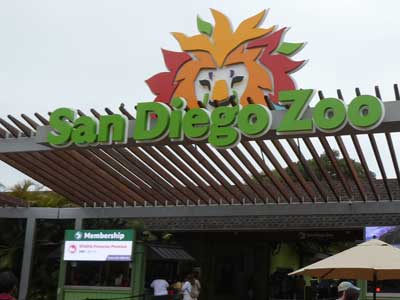

Click for a larger image
The exhibits are designed in different sections based on a particular habitat, such as an African rain forest or Arctic tundra. This includes plants as well as animal species from that area.


We started with the Australian Outback area, nicknamed Koalafornia, which opened in 2013. The zoo has the largest koala colony outside of Australia.


The laughing kookaburra is a type of kingfisher. Its territorial call is a distinctive laugh. It is nonmigratory and monogamous, retaining the same partner for life.


Since 2013, the exhibit also houses Tasmanian devils, the first American zoo to do so. The extensive dwelling even wrapped underneath a pedestrian walkway.
The Tasmanian devil is a carnivorous marsupial. It went extinct in Australia around 3,500 years ago and is now found only on Tasmania. They are said to have fierce tempers and make harsh screeching screams while feeding.


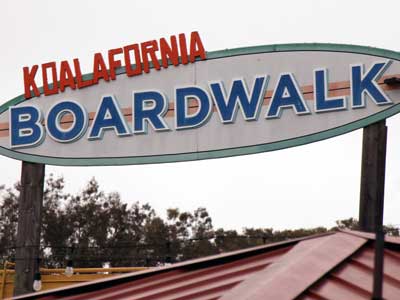

The koalas


Boys: Thackory (born 2011), Burley (2009), Moki (2014), Logan (2014), Burra (2013), Gummy ( 2012) and Chuckels (2014)
Girls: Coolaroo (2018), Wanneroo (2011) and Kolet (2015)
The koala is an arboreal herbivorous marsupial native to Australia. Fur color ranges from silver grey to chocolate brown.


Eucalyptus leaves make up most of their diet. The leaves have toxic compound (so most other animals can't eat it) and low nutritional and caloric content, requiring koalas to sleep up to twenty hours a day. They are not very social.




Africa Rocks opened in 2017. It replaced an exhibit which featured grottos that were built in the 1930s. It is divided into six habitats: Cape Fynbos, Acacia Woodland, Madagascar Forest, Ethiopian Highlands, Kopje and West African Forest. We wandered in and out of these various sections throughout the day.


There are over 700,000 plants at the zoo!
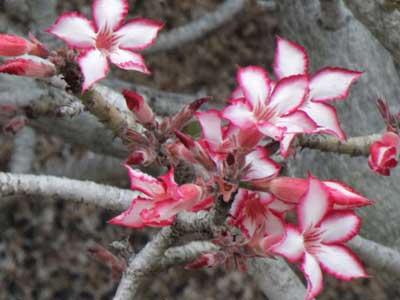


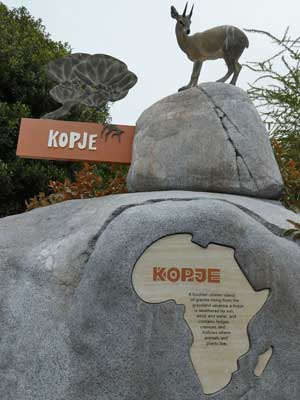
The word kopje in Dutch means "small head" which describes the boulder formations throughout the savanna, like giant rock islands in the plains. Each animal has well adapted feet that allow them to cling to the rocks.


The rock hyrax is also called a dassie or rock rabbit. Native to Africa and the Middle East, they live in small groups in rocky, high elevations. Surprisingly its closest relative is the elephant and it even has tusk-like upper incisors.


The soles of the feet have large, soft pads.

The klipspringer (Afrikaans meaning rock jumper) is a small antelope that lives in rocky terrain with sparse vegetation in eastern and southern Africa. Unlike most antelopes, it has a thick, coarse coat. They are mostly monogamous and tend to stay as close as possible to their partner (within 16 feet) most of the time.




The southern ground hornbill ... and a serval. Its long legs and ears helps it stalk prey in long, thick grass. It hunts mostly rodents, birds, snakes, insects and even fish.

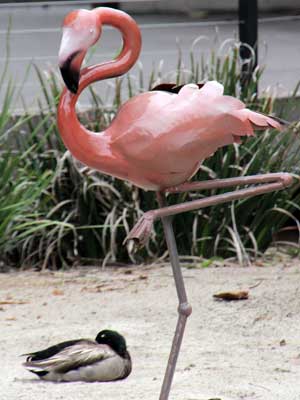
Out of concern for a avian flu, the flamingos have been moved to the Marsh Aviary. Apparently the ducks weren't worthy.
At 11:15, we met for a 1-hour Discovery tour. Abby was our driver and guide.




The sloth bear (or Indian bear) is native to the Indian subcontinent. It feeds on fruits, ants and termites. It uses its long lower lip to suck up insects.


The largest grizzly bears in Alaska can weigh up to 850 pounds. This bear was brought here with its brother at 4 months of age. They were caught raiding campsites with their mom (who was sent to a different zoo).

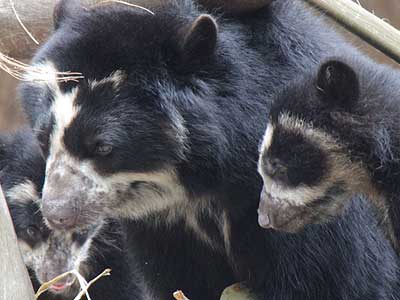
The spectacled bear (or South American bear) is native to the Andes Mountains. It is the only living species of bear native to South America and the last remaining short-faced bear. It mostly just eats plants, with a mere 5% of its diet being meat.


In December 2022, two cubs were born to 8-year-old Alba (mom) and 12-year-old Turbo (dad) at the zoo. Cubs are born with their eyes closed and weigh only about 12 ounces. The cubs can see and walk at three to four months old. The male is Ransisku (the Quechuan language form of Francis) and his sister is Suyana (meaning hope).


return • continue

